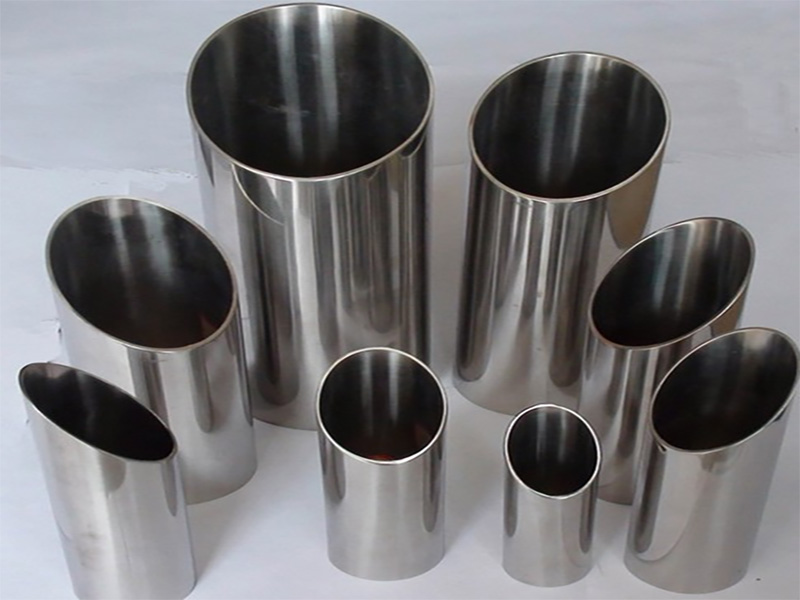

There are many choices of stainless steel surface treatment, which change not only the appearance of the material. Regardless of the intended use, choosing the right completion option is essential.
In the project, when design is the primary consideration, an attractive completion will enhance the attractiveness of the final product. For example, in the construction and automotive industries, different finishes can be used to achieve various visual effects. In retail products, especially kitchen appliances, stainless steel No. 4 finish is one of the most popular finishes.
In the process of machining, the choice of surface finish is also very important. Before painting and gluing, when grinding the steel, it is suitable to adopt rough surface treatment. Where steel is mixed, a smooth surface treatment is better.
The choice of finishing agent shall be clearly defined and appropriately defined by the standard industry name.

In the late 1970s, British iron and steel scientists found that the blunt polishing of stainless steel surface showed great surface roughness. Further tests show that the steel with high surface roughness is seriously damaged during polishing, while the steel with low surface roughness is relatively nondestructive.
In the mid-1980s, dull polishing was widely used in some famous architectural projects. However, it was soon discovered that some of these dull polished surfaces had poor corrosion resistance, especially when exposed to seawater. Therefore, a new surface finish description was introduced and is still used today.
The other three common stainless steel surface treatment schemes are:
No. 2B – Matte
4 . Wire drawing finishing
8 . Mirror polishing
2b is polished, which means no further processing. Matte surfaces are dull in appearance and not ideal for atheistic end uses. However, they are a good choice when the appearance is not important or needs further finishing. Matte finish is the cheapest of stainless steel finishes.
The surface treatment is made of cold rolled stainless steel through special rolls or dies. Cold rolling produces a smoother, less pitted surface. Then soften and descale in acid solution. The steel is subjected to the final process on the polished roll to further improve its finish.
Common applications include:
Chemical plant equipment
Pharmaceutical equipment
Paper mill equipment
Laundry and dry cleaning
refrigeration
Sewage treatment equipment

No. 4 brush can be completed by different suppliers, or even different batches from the same supplier. These changes result from different manufacturing conditions, such as abrasive belt wear. When ordering No. 4 wire drawing surface treatment, a certain degree of change should be expected. It is helpful to require a few square inches of sample to ensure that the completion achieves the desired effect.
Brushed stainless steel produces a unique look with a soft gloss and thin parallel line pattern. It has a strong decorative appeal, but does not reflect light, because too much reflection may not be desirable. For example, over reflective Stainless Steel Decorations on buildings may be dazzling in bright sunlight. The disadvantages of this finish include reduced corrosion resistance because the grooves of the finish are prone to rust.
The surface treatment is to polish the stainless steel in one direction with 120-180 grit sand belt, and then soften with 80-120 grit medium-sized non-woven belt.
Gateway Arch
Gateway Arch
Common applications include:
Jewelry and watches
Household Electric Appliances
air conditioner
heater
Architecture
Automobile design
The portal arch of St. Louis, Missouri is the world’s tallest arch, wrapped in Brushed stainless steel.
Delorenin dmc-12 sports car is famous for its appearance in “back to the future” films. Its panels are made of brushed stainless steel.

Mirror polishing is a highly reflective effect produced by polishing stainless steel. Polishing process improves appearance and consistency, making cleaning easier. It also covers up the influence after welding and hides the surface damage.
8 . Mirror polishing is produced by mechanical treatment of the surface with a series of gradually fine abrasives. In addition, a special rolling process can be used to simulate the appearance of mechanical wear. At this stage, it is crucial to remove deep scratches, as any surface defects will be obvious on the finished product. The final process is to polish the surface for 5-10 minutes to form a high reflection effect like a mirror.
One of the benefits of No. 8 mirror polishing is that it improves corrosion resistance. This polishing eliminates cracks where corrosion particles may attach.
Common applications include:
mirror
Ornamental pruning
A clean room
Columns include
Wall panel
reflector

For Further Details,Please Feel Free To Contact Us: